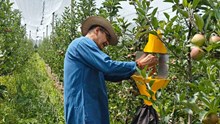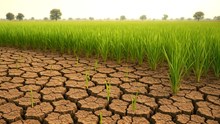
Cheese has always been considered a comfort food, but in India, one variety stands out for its cultural roots and health appeal. Kalari cheese, often referred to as Himalayan mozzarella, is a native treasure from the hilly regions of Jammu and Kashmir. Unlike industrially produced cheeses, Kalari is handcrafted with a process that has been passed down through generations. It is not just food; it represents the traditional lifestyle of mountain communities where fresh milk and local flavors come together in a unique way.
Making of Kalari
Kalari is traditionally made from cow or buffalo milk. The process begins by curdling the milk and separating the solids. The cheese is then molded by hand into round discs, sun-dried, and stored. What makes Kalari truly special is the way it is cooked before eating. Locals often shallow-fry it in its own fat, which gives it a crisp golden crust on the outside while keeping the inside soft, stretchy, and cheesy. The experience of biting into a crunchy layer followed by a molten interior makes it unlike any other cheese.
Street vendors in Jammu serve Kalari stuffed into kulchas or rotis with chutney, making it a popular street food. Yet, in its essence, Kalari is still a homemade, artisanal cheese that connects people to their roots.
A Nutritional Powerhouse
Kalari is not only tasty but also loaded with nutrients. Being a natural source of protein, it supports muscle strength and growth, making it especially useful in high-altitude regions where energy-rich foods are vital. It is also rich in calcium which strengthens bones and teeth. Since Kalari is fermented, it contains probiotics that are good for gut health and digestion.
Unlike heavily processed cheeses, Kalari is made without chemical additives or preservatives. This makes it a more wholesome option for those who prefer natural and traditional foods. Eating it in moderation can provide both nutrition and satisfaction, which explains why it has stood the test of time as a local staple.
Kalari in Modern Lifestyles
Although Kalari has long been a part of local diets in Jammu and Kashmir, it is now gaining recognition beyond the region. With the rising interest in organic, artisanal, and traditional foods, Kalari is finding its place in restaurants and health-conscious kitchens. Many chefs are experimenting with it in fusion dishes, from Kalari pizzas to stuffed sandwiches. Its versatility allows it to blend with both Indian and international cuisines.
Urban consumers are also attracted to Kalari because it is free from mass industrial processing. In an age where people are increasingly questioning what goes into their food, Kalari stands out as authentic, clean, and flavorful.
Cultural Significance of Kalari Cheese
Food is often a reflection of culture, and Kalari is a perfect example of this connection. It is prepared in homes, served in markets, and enjoyed during gatherings. For the people of Jammu, it is more than a cheese; it is comfort food, nostalgia, and pride all rolled into one. When travelers taste Kalari, they are not only experiencing a new flavor but also getting a glimpse of the local traditions of the Himalayas.
A Healthy Indulgence
In today’s lifestyle where many foods are either overly processed or lack nutritional depth, Kalari offers a wholesome indulgence. It satisfies cravings for something rich and cheesy while still being rooted in natural preparation. The key is moderation, as Kalari is energy-dense and best enjoyed as part of a balanced diet. Pairing it with fresh vegetables, whole wheat bread, or herbal chutneys makes it both tasty and nourishing.
Kalari cheese beautifully blends tradition, taste, and health. Born in the serene valleys of Jammu and Kashmir, it has sustained generations with its rich nutrition and comforting flavor. As more people rediscover the value of indigenous foods, Kalari stands as a reminder that sometimes the simplest recipes, created by hand and enjoyed in community, are the most powerful for both health and happiness.
















